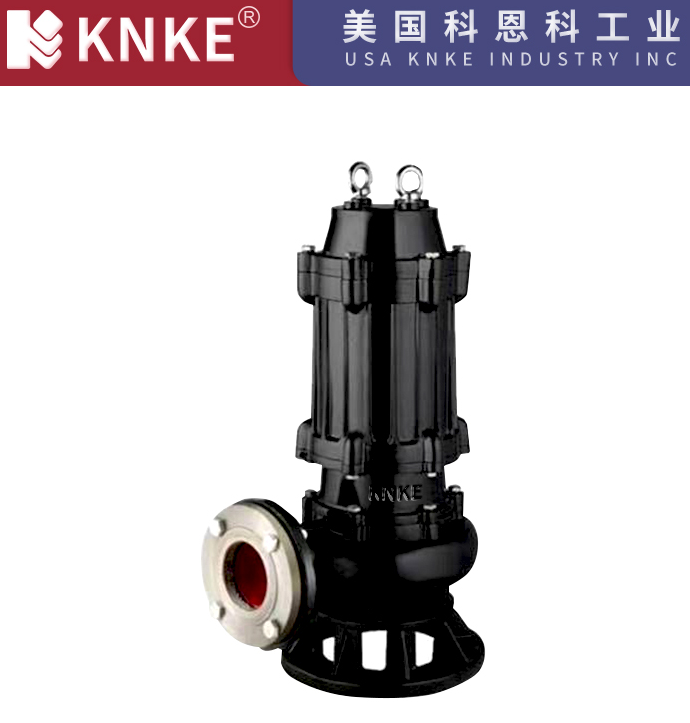Vertical Submersible Sewage Pump Troubleshooting
Vertical submersible sewage pumps are widely used in various industrial and municipal projects, primarily for the discharge of sewage, sludge, and other pollutants. While these pumps offer powerful performance and efficiency, they may experience some common issues after prolonged use. This article discusses four common faults in vertical submersible sewage pumps and their solutions to help users troubleshoot and extend the life of the equipment.

Common Fault 1: Bearing Overheating
Problem Description:
Bearing overheating is one of the most common issues in vertical submersible sewage pumps. Overheating can be caused by excessive lubrication, poor-quality grease, or defects in the bearing itself.
Solution:
- Excessive or Poor-Quality Lubrication: If too much grease is added or the grease quality is poor, it can lead to bearing overheating. It is recommended to replace the grease every 4 months, with the grease quantity being half of the large bearing’s capacity.
- Bearing Defects: If the bearing is defective, it should be replaced. Under high temperatures, the bearing temperature should not exceed 70°C to ensure the normal operation of the pump.
Common Fault 2: Decreased Outlet Pressure and Insufficient Flow
Problem Description:
In some cases, vertical submersible sewage pumps may experience decreased outlet pressure and insufficient flow. This could be caused by factors such as low impeller and flow passage speeds, wear of the pump casing’s wear ring, and more.
Solution:
- Low Impeller and Flow Passage Speeds: Check if the impeller is damaged or worn out. If necessary, replace or repair the impeller.
- Wear of Pump Casing Wear Ring: Regularly check the pump casing’s wear ring and replace any worn-out seals to restore the pump’s efficiency.
- Clogged Suction Port: Remove any blockages from the suction port to ensure smooth fluid flow.
- Viscosity Change of the Fluid: When fluid viscosity increases, both head and flow rate decrease. Therefore, it is essential to maintain the specified viscosity of the liquid to avoid performance issues.
Common Fault 3: Severe Vibration
Problem Description:
Vibration is a common fault during the operation of vertical submersible sewage pumps. Severe vibrations can affect the pump’s stability and may even lead to equipment failure.
Solution:
- Excessive Installation Deviation: Check if the pump installation meets the required specifications and ensure the pump is vertically aligned.
- Wear of Shaft Sleeves: Regularly inspect the shaft sleeves for wear. If necessary, replace or adjust them.
- Shaft Bending: Check if the shaft is bent. Replace any bent shafts to prevent further damage.
- Impeller Blockage or Obstruction by Debris: Clear any debris from the impeller to ensure smooth operation.
- Bearing Defects: Bearings are often the primary cause of vibration. Inspect the bearings and replace them if needed.
Common Fault 4: Motor Overload
Problem Description:
Motor overload is a serious fault that can lead to the pump stopping or even getting damaged.
Solution:
- Flow Rate Exceeds the Specified Value: Ensure the pump’s flow rate is within the design limits to avoid overloading.
- Friction Between Impeller and Pump Casing Seal Ring: Check for excessive friction between the impeller and the seal ring, which can reduce flow rate and increase motor load.
- Shaft Bending or Bearing Issues: If the shaft is bent or there is excessive bearing friction, adjust or replace the damaged parts to eliminate the overload situation.
Vertical submersible sewage pumps are essential equipment in modern industrial applications. Although they may encounter common faults over time, early detection and prompt resolution can effectively extend the pump’s service life and maintain optimal performance. The above article outlines four common faults and their solutions, which will assist users in maintaining and managing vertical submersible sewage pumps.
